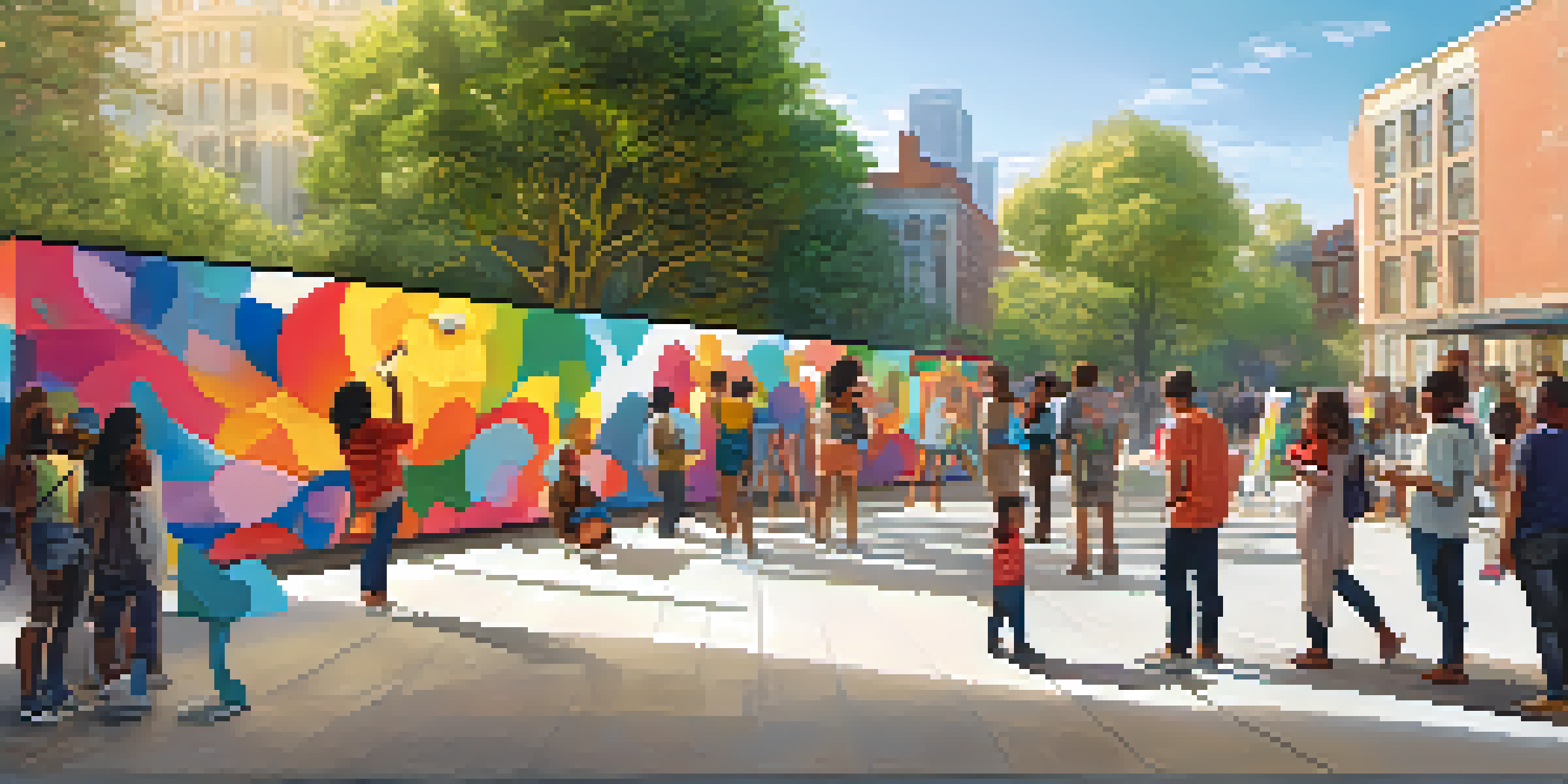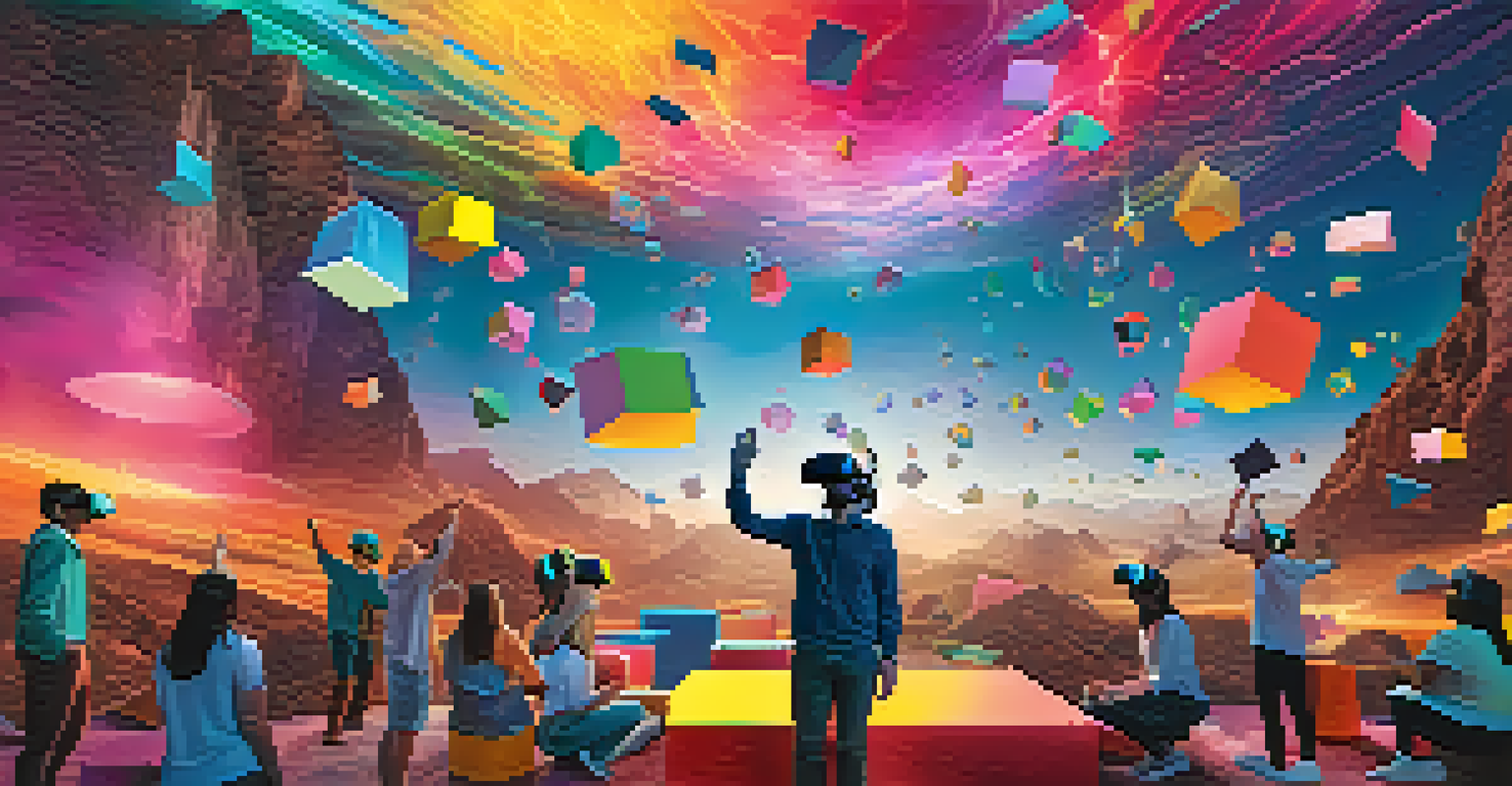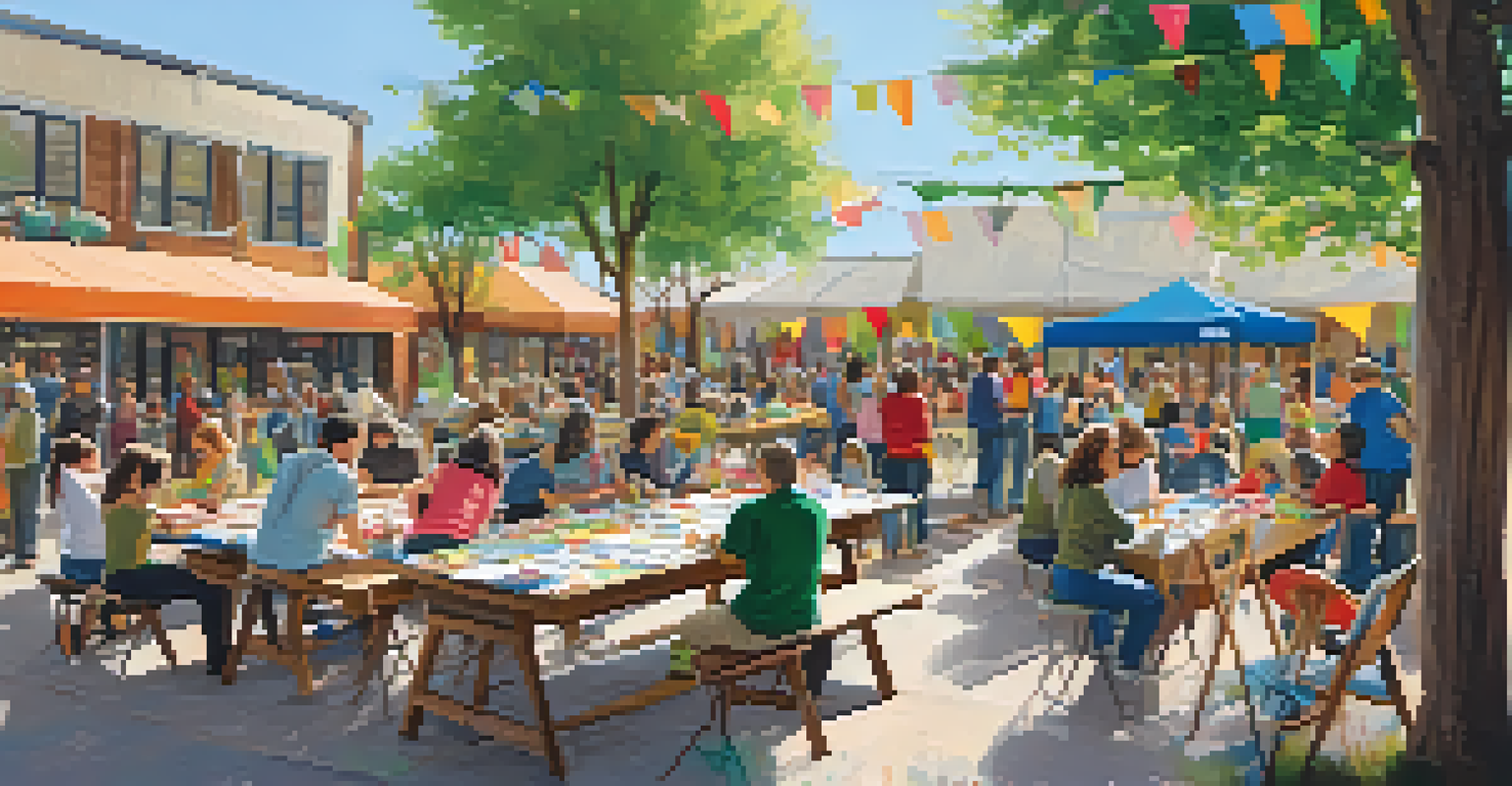Interactive Art: Engaging the Public in Creative Experiences

Understanding Interactive Art and Its Purpose
Interactive art is a dynamic form of creativity that invites participation from the audience. Unlike traditional art, where viewers are passive observers, interactive art encourages engagement, allowing people to become part of the artwork. This interplay transforms the experience and often shifts the focus from the artist to the audience's reactions and contributions.
Art is not freedom from discipline, but disciplined freedom.
The purpose of interactive art goes beyond mere aesthetics; it aims to foster connections among individuals and communities. By involving participants, artists can evoke emotional responses and provoke thought, making the experience memorable and meaningful. This kind of engagement can spark conversations and encourage collaboration, breaking down barriers between the artist and the public.
In a world increasingly driven by technology, interactive art can take many forms, from digital installations to large-scale public works. Each piece serves as a bridge, inviting individuals to explore their creativity while redefining the relationship between art and audience.
The Role of Technology in Interactive Art
Technology has revolutionized the way we experience art, creating new avenues for interaction. With advancements in virtual reality (VR), augmented reality (AR), and digital media, artists can create immersive environments that engage multiple senses. For instance, a VR art installation allows users to step into a visually stunning world, making them active participants in the narrative.

Moreover, technology enables artists to reach wider audiences through online platforms. Interactive art can now be shared globally, allowing people from different backgrounds to engage with it. This democratization of art not only enhances accessibility but also enriches the creative dialogue, as diverse perspectives contribute to the artwork's evolution.
Interactive Art Engages Audiences
Interactive art transforms viewers into active participants, fostering emotional connections and community engagement.
As technology continues to evolve, the potential for interactive art grows exponentially. Artists are now able to experiment with new forms of expression, pushing the boundaries of what art can be and how it can be experienced.
Benefits of Engaging the Public in Art
Engaging the public in interactive art offers numerous benefits, both for individuals and communities. Firstly, it fosters a sense of ownership and belonging, as participants contribute to the artwork's creation and narrative. This shared experience can strengthen community bonds, promoting social interaction and collaboration among diverse groups.
The role of the artist is to make the world visible.
Additionally, interactive art can serve as a powerful tool for education and awareness. By involving participants in the creative process, artists can address important social issues, prompting discussions and reflections that might not occur through traditional forms of art. This educational aspect can empower individuals, encouraging them to think critically about the world around them.
Furthermore, engaging with interactive art can boost creativity and innovation. When individuals are encouraged to express themselves and collaborate, it can lead to unexpected ideas and solutions, benefiting not just the artistic community but society as a whole.
Interactive Art in Public Spaces
Public spaces are ideal venues for interactive art, as they invite spontaneous engagement from a diverse audience. Installations in parks, plazas, or streets can transform everyday environments into vibrant cultural hotspots. For example, a public mural that incorporates elements for community participation allows passersby to contribute their own designs, turning the artwork into a collective expression.
Moreover, interactive art in public spaces can enhance the urban experience, encouraging people to explore their surroundings. It creates opportunities for social interaction and cultural exchange, fostering a sense of community identity. This transformation of public spaces can also attract tourism, benefiting local economies.
Technology Enhances Artistic Experience
Advancements in technology, such as VR and AI, enable artists to create immersive and dynamic environments for audience interaction.
By integrating art into everyday life, cities can cultivate an atmosphere of creativity and inspiration. This not only enriches the lives of residents but also creates lasting memories for visitors, highlighting the importance of art in our shared environments.
The Impact of Interactive Art on Mental Health
Participating in interactive art can have a positive impact on mental health, offering individuals a therapeutic outlet for expression. Engaging in creative activities has been shown to reduce stress, anxiety, and depression, providing a sense of accomplishment and joy. For many, the act of creating or collaborating in art can be a form of self-care, enhancing emotional well-being.
Moreover, interactive art can promote social connections, which are vital for mental health. By participating in communal art projects or workshops, individuals can forge new friendships and strengthen existing ones. This sense of belonging can be particularly beneficial for those who may feel isolated or disconnected from their communities.
As we continue to recognize the importance of mental health, interactive art offers a unique avenue for healing and connection. By creating spaces for artistic expression, we can cultivate environments that support emotional wellness and resilience.
Future Trends in Interactive Art
The future of interactive art is bright, with emerging trends that promise to reshape the landscape of creative experiences. One such trend is the increasing use of artificial intelligence (AI) in art creation. Artists are beginning to collaborate with AI technologies to create dynamic installations that evolve based on audience interactions, resulting in unique experiences each time.
Additionally, sustainability is becoming a focal point in interactive art projects. Artists are exploring eco-friendly materials and methods, encouraging participants to reflect on environmental issues. By incorporating sustainability into interactive art, creators can inspire participants to engage with and advocate for a healthier planet.
Public Art Strengthens Communities
Interactive installations in public spaces promote social interaction and cultural exchange, enriching both community identity and local economies.
As we move forward, the fusion of technology, sustainability, and community engagement will likely define the next wave of interactive art. Artists will continue to innovate, utilizing new tools and ideas to create experiences that resonate with audiences and enrich our cultural landscape.
Conclusion: The Power of Interactive Art
In conclusion, interactive art serves as a powerful medium for engaging the public and fostering creativity. By inviting participation, it transforms passive viewers into active contributors, creating shared experiences that resonate on multiple levels. This engagement not only enriches the artistic landscape but also strengthens community bonds and encourages personal expression.
As we embrace the diverse forms of interactive art, we are reminded of its potential to connect us, heal us, and inspire us. The collaborative nature of this art form encourages dialogue and exploration, allowing us to reflect on our shared experiences and individual perspectives.

Ultimately, interactive art is about creating a sense of belonging and community. By engaging with art in meaningful ways, we can celebrate our creativity and unity, paving the way for future generations to appreciate and participate in the beauty of collaborative expression.